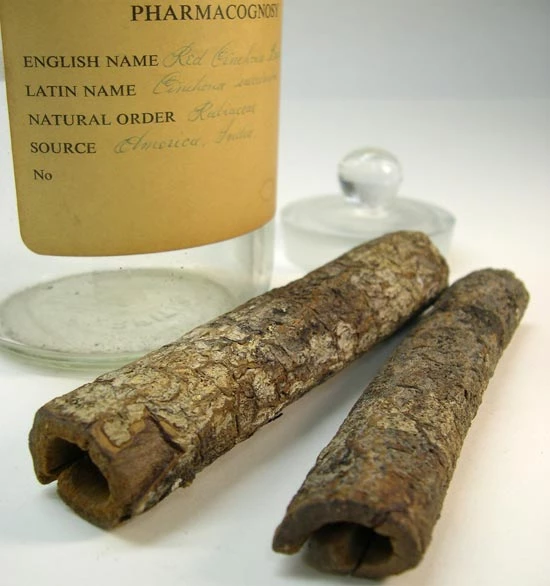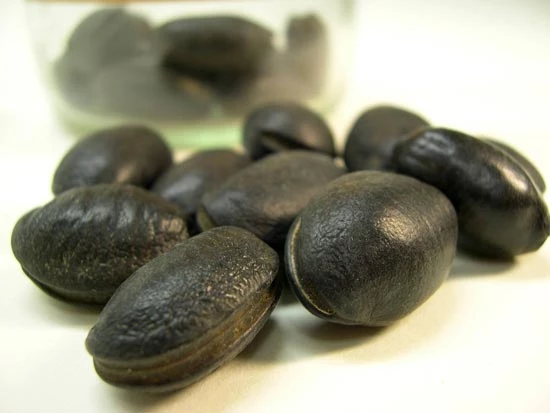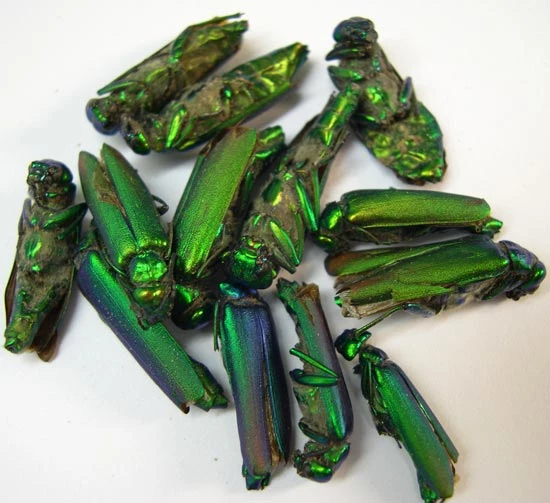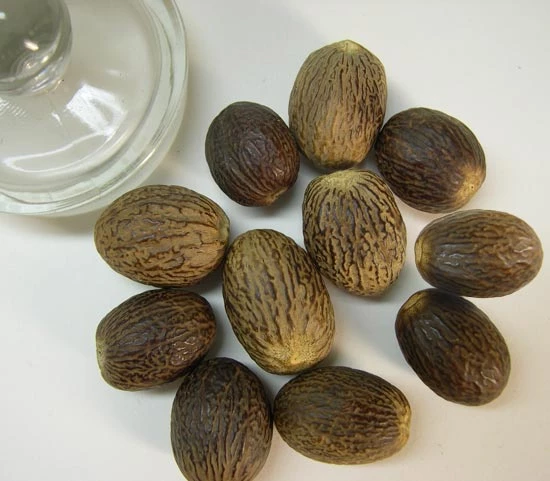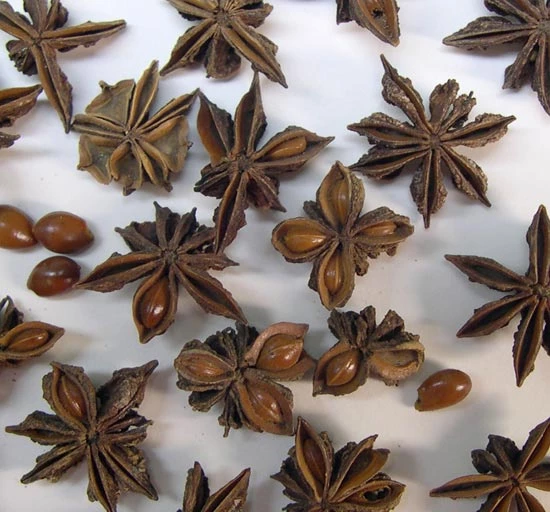Old cures: Amgueddfa Cymru's Historic Medicine Collection
Some examples from the materia medica collection, stored in glass jars.
Nearly all medical benefits and cures come from nature. Even one of the most deadliest human diseases, malaria, was first treated with the extract from the bark of a South American tree. Amgueddfa Cymru holds a remarkable collection of materials used in historic medical remedies.
In 2007, Amgueddfa Cymru were gifted a collection of 469 materia medica specimens from Professor T.D. Turner OBE of the Welsh School of Pharmacy, Cardiff University. It includes material of animal and plant origin, such as bark, roots, leaves and resins, which were the traditional sources of medicinal drugs. The collection will help visitors and students wishing to learn more about current and historic medicines.
Life or Death
The amount of active ingredients within each plant can vary, but would often make the difference between life and death. The active chemical constituents such as alkaloids, glycosides or tannins were released by, for example, macerating or chewing the material or making an extract or a tincture. Many of these constituents have since been identified and isolated and are now used in their pure form in modern pharmaceuticals.
Kola nuts, the original ingredient of the medicinal Coca Cola of 1886
Kola Nuts and Coca leaves
The Coca Cola we know today was originally derived from Mariani's Coca Wine and then John Pemberton's Coca Cola, originally intended as a patent medicine to act as a tonic and help calm the stomach. The constituents were sarsparilla, coca leaf and kola nuts. Kola nuts are a high source of caffeine and, although this has been substituted today, caffeine and sarsparilla are still important components of present day Coca Cola.
The Kola nut of Western Africa (Cola acuminata) was chewed or brewed into a stimulating tea. Coca leaf (Erythroxylum coca), the plant from which cocaine is derived, originated from the Andean highlands of South America, was also chewed to diminish sensations of hunger and fatigue, and to aid digestion. It is believed that the Aztecs gave their slaves coca leaf to help them move the huge stone masses for building their pyramids. Coca leaf is still used by Peruvians to help combat altitude sickness. Cocaine was extracted and used as the first local anaesthetic primarily for eye and dental surgery.
bark from Tropical South America, containing anti-malarial quinine.
Tree bark to treat malaria
Some barks have been used for medicinal purposes. In Britain, the best known is probably willow bark (Salix alba), from which aspirin is derived. Even the leaves of the willow have helped with pain relief — Hippocrates recommended their use in 5BC.
The bark of the Cinchona tree has equally important characteristics. Cinchona also known as Jesuit Bark is a genus of about 25 species native to tropical South America. The bark contains a source of a variety of alkaloids, the most familiar being the anti-malarial and anti-fever compound, quinine. These compounds interfere with the protozoan parasites of the genus Plasmoidium, which cause malaria.
Potable, bottled water in colonial India was carbonated and spiked with quinine to both improve the flavour and prevent the onset of malaria, and hence became Indian Tonic Water.
The Ordeal or Calabar Bean, from Calabar in south-east Nigeria.
The Ordeal Bean: Die if guilty, survive if innocent
The name Calabar Bean (Physostigma venosum) is derived from the locality of Calabar in south-east Nigeria, where it was used in 'trial by ordeal', notably in cases of witchcraft — hence its alternative name, the Ordeal Bean. The bean would be ground up and placed in a drink given to the accused. It was assumed that a guilty person would nervously sip the concoction, causing certain death. An innocent person, in contrast, would knock back the whole drink with bravado, which would generally be too much for the stomach, which would expel the poison quickly. Consequently, death was taken as a sign of guilt, but surviving was a sign of innocence.
Its medical significance was discovered in 1855 and it is now the basis of the highly important drug physostigmine, used to treat reduced bladder control, glaucoma and delayed gastric emptying.
Blistering beetles are distributed widely from southern Europe to Central Asia and Siberia.
Blistering beetles
These beetles are known as Cantharides or Blistering beetles (Lytta vesicatoria). Crushing the insect body releases the chemical cantharidin, which is aggressively stimulating to mammalian skin and internal organs. It was found to be a successful aphrodisiac by causing irritation or stimulation to the urinary tract. It has even been successfully used on cattle to encourage mating.
The nutmeg, believed to look like our brain.
Nutmeg
If a plant has a shape or form that in any way resembles part of the human body, then that plant was once believed to heal that part. The humble nutmeg (Myristica fragrans), because it superficially looks like a human brain, has been associated with powers surrounding the brain and mind. This has been accepted through folklore as nutmeg also has psychoactive components. Nutmeg contains the alkaloid myristicin which, is narcotic and toxic, and large doses can cause hallucinations, nausea, vomiting and circulatory collapse; very large doses can be fatal.
Nutmeg is a fruit endemic to Banda, the largest of the Molucca Spice Islands of Indonesia. The seed was highly sought, for its medicinal properties (it was thought to ward off the plague) and as a symbol of wealth and opulence; a person with a handful of nutmegs in their possession in the late 1600s would have been financially secure for life. The bloody wars that ensued to control the nutmeg plantations resulted in the death of 6,000 Bandanese people.
Between the 17th and mid-20th centuries, the Dutch had full control of the Spice Islands. They sometimes kept the price of this spice artificially high by setting fire to their own warehouses full of nutmegs. The British fought bitterly to gain control of Run, one of the smaller Spice Islands, which resulted in the Dutch giving Britain Manhattan Island in exchange for Run.
Nutmeg has been considered to be a useful medicinal herb in a number of Asian societies. It has been used to treat digestive problems and as an aphrodisiac; it has been claimed to combat asthma and heart complaints, and is still used as a sedative and as flavouring agent.
Japanese Star Anise, physically similar to the culinary spice Chinese Star Anise.
Star Anise
There are two types of Star Anise: one is the commonly used Chinese spice (Illicium verum) and the other is the Japanese Star Anise (Illicium anisatum). When dried they are very difficult to tell apart, but one is harmless and the other toxic. The only way to separate the two conclusively is to conduct chemical analysis or to examine the shape of their calcium oxalate crystals. The trees also look similar, so, understandably in the past these spices have been combined and sold as foodstuffs.
Japanese star anise contains several active components that cause severe inflammation of the kidneys, urinary tract and digestive organs. Consumers have been hospitalised with neurological symptoms after ingesting excessive doses of Japanese star anise or smaller doses of products adulterated with the fruit. Cases of illness, including serious neurological effects such as seizures, have also been reported after using star anise tea, and this may be a result of mixing up the Japanese and Chinese species.
Medicinally Japanese Star Anise is used as a carminative, to relieve toothache and to stimulate the kidneys and promote urination. The leaves and seeds are also anti-bacterial.
Castor sac of the mature North American Beaver Castor Canadensis.
Beaver Castor sac
This unusual item is a singular castor sac of the mature North American Beaver Castor Canadensis. It is also known as Castor Fibre and is similar to the anal gland in dogs.
The castor sac secretes a yellowish substance called castoreum, which the beaver uses in combination with its urine to scent-mark its territory. Both male and female beavers possess a pair of castor sacs located in two cavities under the skin between the pelvis and the base of the tail.
Historically, castoreum has been used in the treatment of hysteria and menstrual cramps, and was used successfully for cardiac disease. Today, it is used in beaver trapping, as a tincture in some perfumes and is even touted as an aphrodisiac. Castoreum is also used in small amounts to contribute to the flavour and odour of cigarettes.
Hopefully Amgueddfa Cymru's materia medica collection will be expanded in the future. The collection is open to the public, but currently only by appointment so please contact (029) 2057 3224 or (029) 2057 3119 prior to your visit.
Glossary
Materia Medica
Derived from the Latin, meaning medical material used from the period of the Roman Empire up until the 20th century
Pharmacognosy
The Greek term simply meaning knowledge of drugs. It has since been replaced with Pharmacology
Herbals
Early books on the medicinal properties of plants and how they have been harvested as a medical resource.


